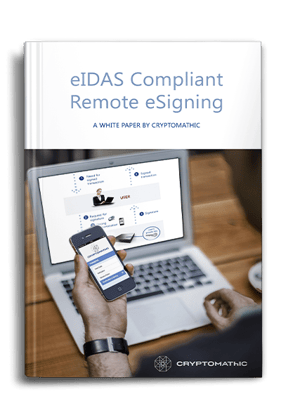Guidance on
Achieving Qualified
Remote eSigning for eIDAS Compliance

What’s inside?
Inside this white paper you’ll discover
This white paper explores the key business drivers of remote digital signing and offers guidance to understanding the eIDAS legislation, technical standards, technology and security challenges to deliver user freedom and confidence while reducing costs.
It introduces Cryptomathic's patented approach to delivering remote digital signing in accordance with eIDAS for Advanced and Qualified electronic signatures. Understand how your business can:
- Offer a unique signing experience for all digital channels incl. web portals, desktop applications and mobile.
- Issue Advanced and Qualified Electronic Signatures in compliance with European ETSI and CEN technical standards and the eIDAS regulation.
- Simplify PKI for the end-user and implement policies for different assurance levels.
- Reuse existing 2-Factor Authentication deployment.
- Achieve data integrity and non-repudiation
- Reduce operational costs for document management
- Realize how Cryptomathic Signer can enable your digitalisation strategy.